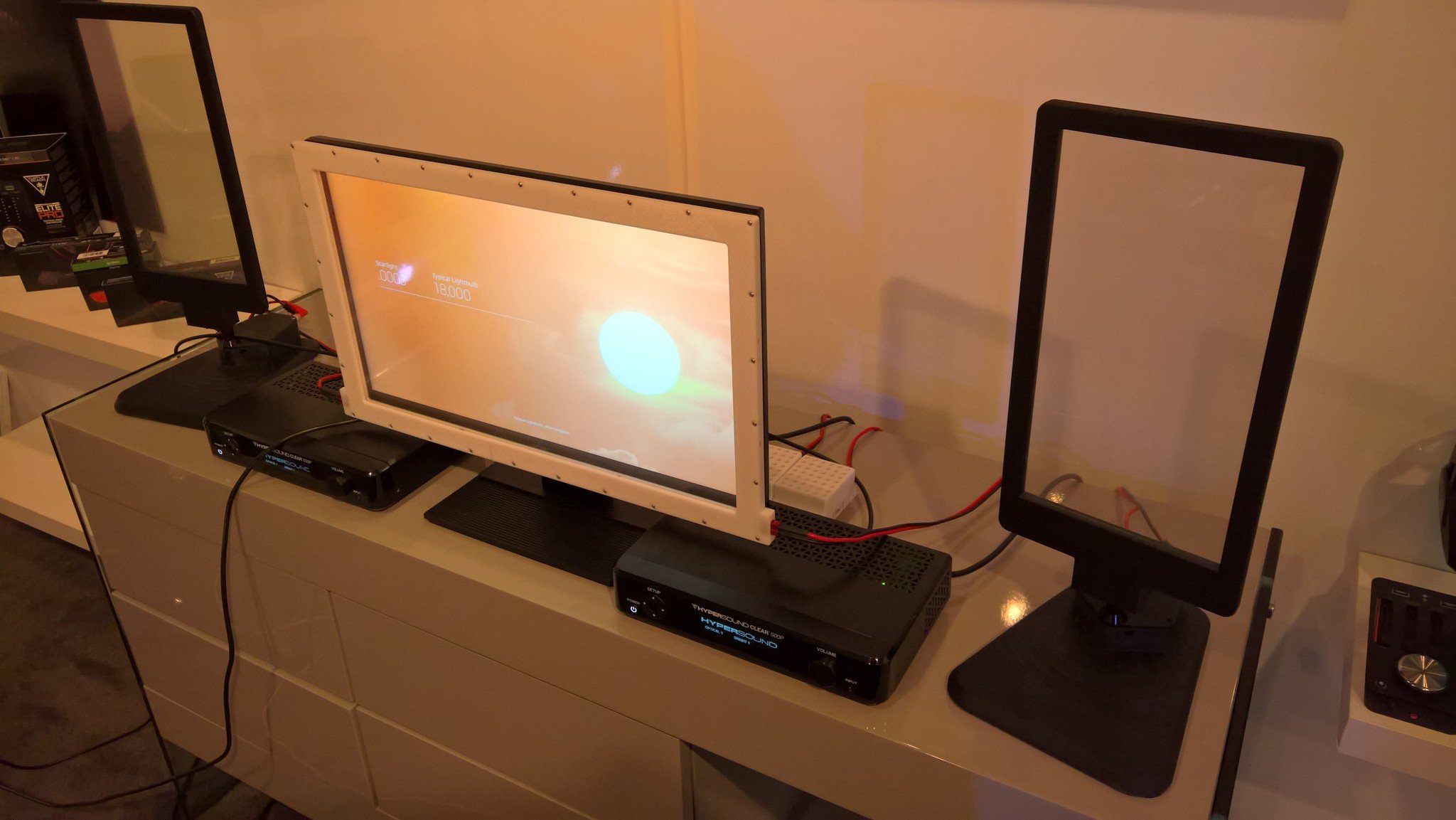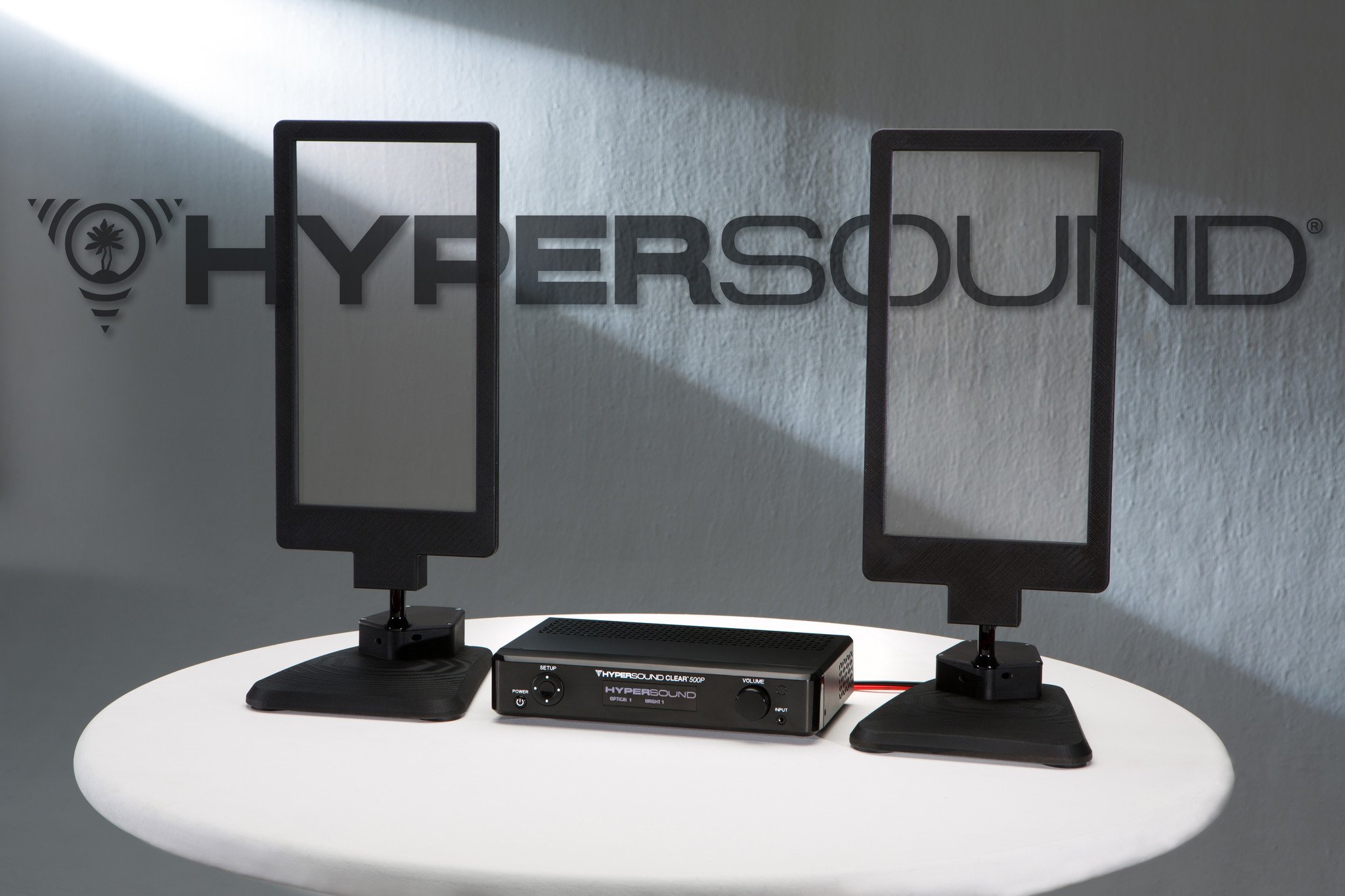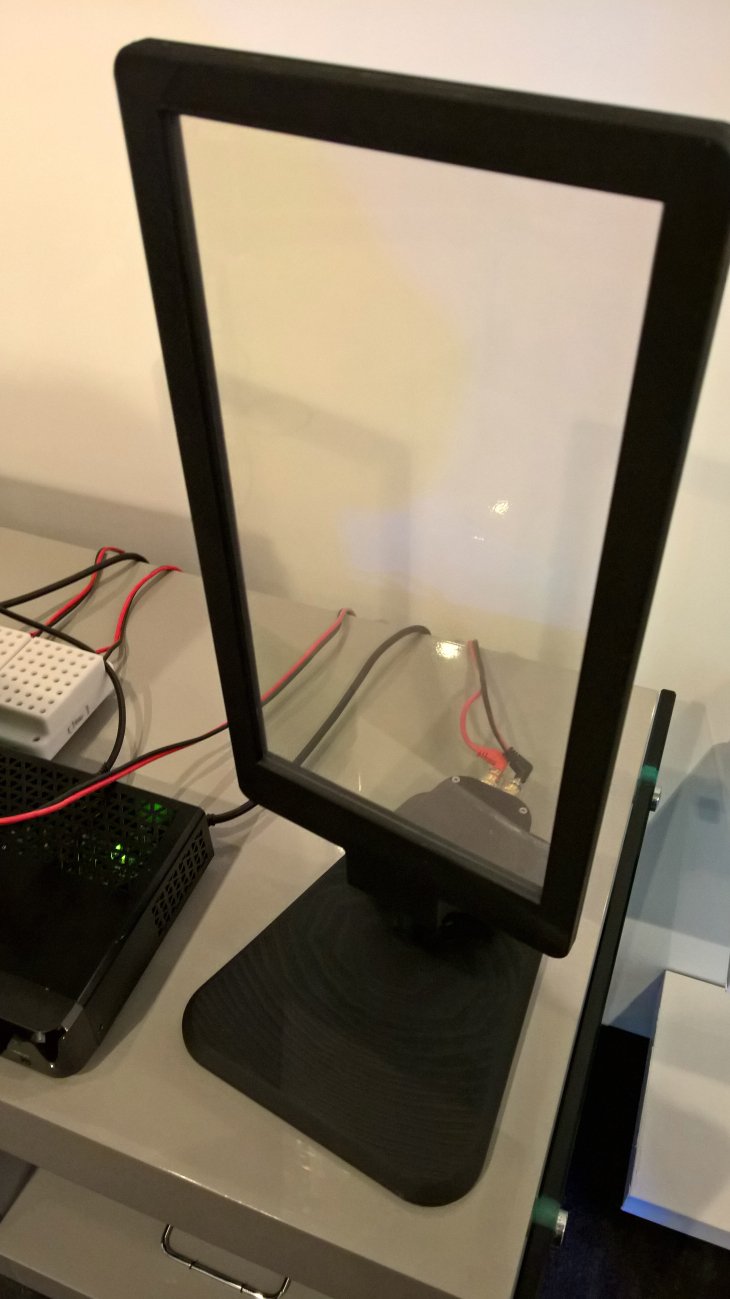Turtle Beach's HyperSound Glass was the most jaw-dropping discovery at E3
E3 is all about the games, sure, but it wasn't a game that totally blew my mind in LA. It was Turtle Beach's HyperSound Glass.

Turtle Beach has patented a method of amplifying and directing audio using ultrasound, and I experienced it for the first time at their E3 2016 booth in Los Angeles.
I entered the meeting room expecting to see a physical prototype only, perhaps some PR speak, and maybe a slick concept video.
Little did I know, I was already experiencing HyperSound.
Going Ultrasonic
The square shaped room was filled with ambient wilderness audio, birds were tweeting, leaves rustling in a gentle breeze. I mindlessly presumed that they had a surround sound speakers set up in the booth, and didn't even think to check where the audio was coming from. The sound was crystal clear, and coming from every direction.
When Turtle Beach's representative told me that the only audio in the room was coming directly out of a glass panel in front of me, I was all kinds of stunned.
HyperSound Glass was as immersive as wearing surround sound headphones.
Turtle Beach's HyperSound Glass prototypes were humble in their presentation. They were essentially glass panels with a plastic frame connected to small HyperSound processing units sitting innocently on the table.
Considering these objects were practically fresh from the laboratory floor, it was easy to envisage how sleek the consumer version could look. Flat glass panels will be far easier to mount than traditional box-shaped speakers.
All the latest news, reviews, and guides for Windows and Xbox diehards.
HyperSound Glass was as immersive as wearing surround sound headphones. The audio resonated so, so close to my ears, but still felt as though it had saturated the whole room. Regardless of how close I stood to HyperSound Glass unit, the audio remained directed and crisp – and the volume level was completely unaffected.
Simply put, HyperSound Glass felt thoroughly futuristic.
When I stepped out of the monitor's direct path, the volume decreased massively, but not completely. HyperSound is directed audio, and you only get the full effect if you're directly in front of the ultrasound beam.
It was a vivid experience, unlike anything I've had before when it comes to audio. It was as though I was wearing a 3D audio headset, only, without wearing a headset. Simply put, HyperSound Glass felt thoroughly futuristic.
The unit I got to hear was an incredibly rough prototype, and they told me it would be at least two years before they had something consumer viable. But even in its prototypical stage, HyperSound Glass was incredibly impressive. One writer sitting in the meeting quipped, "It sounds like there are birds in my head," listening to the countryside ambiance Turtle Beach had set out for the demo.
Judging by what I heard, I'm convinced HyperSound will be a really big deal.
How does it all work?
Traditional audio radiates from the source and immediately begins to degrade in the air. HyperSound is a little different. It's less about the origin of the sound, and more about the direction it's traveling in.
Think of ultrasound audio as the difference between a light bulb and a flash light.
One comparison Turtle Beach made was the difference between a light bulb and a flash light. Bulbs diffuse their light in every direction, like audio, but a flashlight directs a more powerful beam in a more focused channel. HyperSound is very similar.
HyperSound processors connected to the ultrasound emitting panel inject traditional audio onto the ultrasonic beam. Ultrasound is usually above the human audible range, but HyperSound piggybacks on top of the channels with its regular audio, and the effect is dramatic.
When the sound is transported via ultrasound, it creates audio within the beam, rather than at the source. Audio still escapes the beam, but it sounds muffled and quiet compared to when you're sitting directly in front. Turtle Beach create a stereo effect by splitting the HyperSound Glass panel into two channels down the middle, giving the impression of 3D audio.
Anywhere glass exists, Turtle Beach now has the capability to add audio into the mix.
According to Turtle Beach, utilizing HyperSound results in a higher frequency response, and also reduces the overall power consumption necessary to produce higher volume audio. It also means that you can have far smaller "speaker" panels, and still get loud and vivid audio from a device that has a far smaller physical footprint than a traditional wall-mounted speaker.
The glass that makes up HyperSound's prototype panels is layered, not unlike a smartphone screen. The glass incorporates a transparent film that interacts directly with HyperSound's electronic processing units. This is how the ultrasound beam is generated, creating the mind-boggling 3D-like sound I experienced.
Turtle Beach acknowledged that it usually takes people's brains a few seconds to work out exactly what is happening because it is so far removed from the way we're used to experiencing sound.
Ultrasonic potential
Is HyperSound truly better than traditional audio? I'm not sure if HyperSound Glass panels can replace conventional headphones or speakers – at least in the near-term – but with further development and iteration, the technology could quickly become ubiquitous.

The applications for HyperSound are endless. Imagine being able to watch YouTube clips in public without disturbing those around you. You could sit at your desk at work, having a personal rock concert, while your co-workers sit nearby, none the wiser. Applications for public advertising signage and audio healthcare is pretty huge too, putting into perspective just how big this technology could be for Turtle Beach as a company who are traditionally focussed on video game headsets.
Turtle Beach is also using similar technology in their HyperSound Clear speakers, which delivers directional audio to people with hearing loss. The idea there is that the user can share the same televisual experience without needing to crank up the volume to levels untenable for other viewers. Separate audio volumes in the same room for different needs.
Turtle Beach envisions a future where every piece of glass could incorporate this technology. From smartphones, car dashboards, and even business cards that speak your name to the recipient – although that last one is a little more space age than the other potential applications.
Anywhere glass exists, Turtle Beach now has the capability to add audio into the mix. HyperSound could potentially solve all sorts of issues that arise from unwanted audio in group scenarios and delivering audio where previously there could be none. The possibilities are exciting.
We'll be following Turtle Beach's HyperSound journey closely over the coming years, so stay tuned. Who knows? Maybe the Surface Phone 3 will come with HyperSound Glass.

Jez Corden is the Executive Editor at Windows Central, focusing primarily on all things Xbox and gaming. Jez is known for breaking exclusive news and analysis as relates to the Microsoft ecosystem while being powered by tea. Follow on Twitter (X) and tune in to the XB2 Podcast, all about, you guessed it, Xbox!

